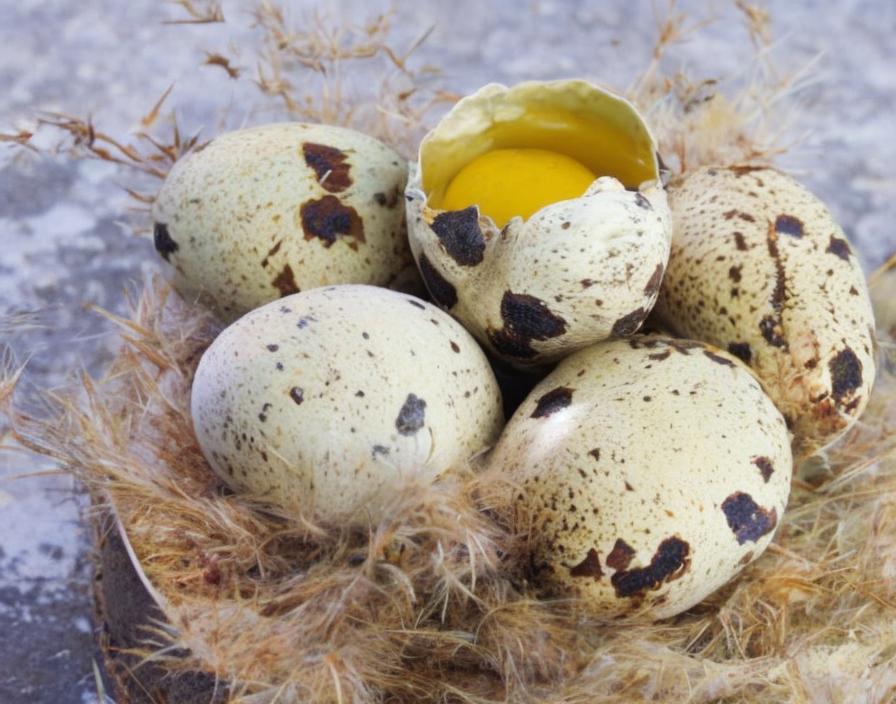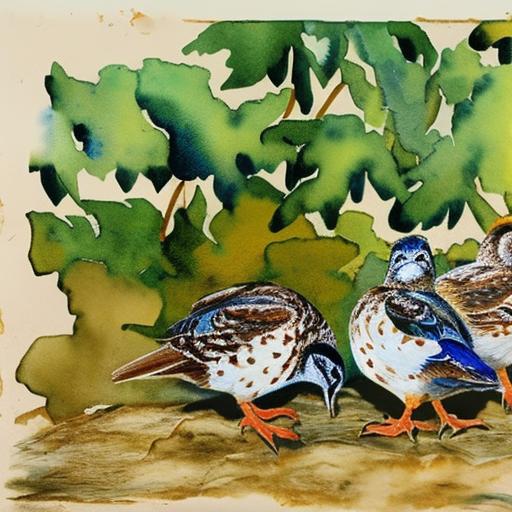Quail breeding is a rewarding and profitable venture for many farmers and hobbyists. Whether you are interested in raising quail for meat, eggs, or as pets, a well-planned breeding program is essential for success. A successful quail breeding program requires careful selection of breeding stock, proper housing and care, effective breeding techniques and management, as well as attention to incubation, hatching, and chick rearing. Monitoring and evaluating the success of your breeding program is also crucial for continuous improvement and sustainability.
Key Takeaways
- Quail breeding programs are a great way to produce high-quality quail for meat and egg production.
- Selecting breeding stock with desirable traits such as size, color, and temperament is crucial for a successful breeding program.
- Providing proper housing, nutrition, and care for breeding quail is essential for their health and productivity.
- Implementing effective breeding techniques and management practices can help maximize breeding success and genetic diversity.
- Proper incubation and hatching techniques, as well as careful chick rearing, are important for the overall success of the breeding program.
Selecting Breeding Stock
Selecting the right breeding stock is the foundation of a successful quail breeding program. When choosing breeding stock, it is important to select birds that are healthy, have good conformation, and exhibit desirable traits such as high egg production, fast growth, and good temperament. It is also important to avoid inbreeding by selecting unrelated birds to prevent genetic defects and maintain genetic diversity within the flock. Additionally, selecting birds with good fertility and hatchability will ensure a successful breeding program. Regular health checks and screening for diseases are also important to maintain a healthy breeding stock.
In addition to physical traits, it is important to consider the genetic background of the birds when selecting breeding stock. Breeding from birds with desirable traits such as high egg production, fast growth, and disease resistance will help improve the overall quality of the flock. It is also important to cull birds that do not meet the desired standards to maintain the quality of the breeding stock. By carefully selecting breeding stock, you can ensure the success and sustainability of your quail breeding program.
Housing and Care for Breeding Quail
Proper housing and care are essential for the health and well-being of breeding quail. When setting up housing for breeding quail, it is important to provide adequate space, ventilation, and protection from predators. The housing should also be designed to provide a comfortable environment for the birds to lay eggs and rear their chicks. Providing nesting boxes or areas with suitable nesting materials will encourage the birds to lay eggs and incubate them properly.
In addition to housing, providing proper nutrition and care is essential for breeding quail. A balanced diet that includes high-quality feed, fresh water, and supplemental vitamins and minerals will ensure the health and fertility of the breeding stock. It is also important to provide regular health checks and preventive care to prevent diseases and maintain the overall well-being of the birds. Proper sanitation and hygiene in the housing area are also important to prevent the spread of diseases and maintain a healthy breeding environment.
Breeding Techniques and Management
Effective breeding techniques and management are essential for a successful quail breeding program. Understanding the reproductive behavior of quail and implementing proper breeding techniques will help maximize egg production and fertility. Providing a suitable environment with proper lighting, temperature, and nesting materials will encourage the birds to lay eggs and incubate them successfully. It is also important to monitor the breeding stock regularly for signs of infertility or reproductive problems and take appropriate measures to address any issues.
In addition to breeding techniques, proper management of the breeding flock is essential for success. This includes maintaining proper male-to-female ratios, providing adequate space and nesting areas, and managing social dynamics within the flock. It is also important to monitor the health and behavior of the birds regularly to ensure their well-being and address any issues that may arise. By implementing effective breeding techniques and management practices, you can maximize the reproductive potential of your quail breeding program.
Incubation and Hatching
Incubation and hatching are critical stages in the quail breeding process that require careful attention and management. Proper incubation techniques, including temperature, humidity, and turning of the eggs, are essential for successful hatching. It is important to use a reliable incubator and monitor the temperature and humidity levels regularly to ensure optimal conditions for embryo development. Turning the eggs several times a day will help prevent the embryos from sticking to the shell membrane and promote even development.
Once the eggs have reached the appropriate stage of development, they can be transferred to a separate hatcher for hatching. Providing a warm and humid environment in the hatcher will help the chicks hatch successfully. It is important to monitor the hatching process closely and assist any chicks that may have difficulty hatching. After hatching, it is important to provide proper care and nutrition for the chicks to ensure their health and well-being.
Rearing Chicks

Rearing chicks is an important stage in the quail breeding process that requires proper care and management. Providing a warm and clean brooder area with access to feed and water is essential for the health and growth of the chicks. It is important to monitor the temperature in the brooder area regularly to ensure that it is suitable for the chicks’ development. Providing a balanced diet that includes high-quality chick starter feed will ensure proper growth and development.
In addition to nutrition, it is important to provide proper care and handling of the chicks to ensure their well-being. This includes regular health checks, monitoring for signs of disease or stress, and providing appropriate socialization with other chicks. It is also important to provide adequate space as the chicks grow to prevent overcrowding and maintain their overall health. By providing proper care and management during the rearing stage, you can ensure the healthy development of your quail chicks.
Monitoring and Evaluating Breeding Program Success
Monitoring and evaluating the success of your quail breeding program is essential for continuous improvement and sustainability. This includes tracking key performance indicators such as egg production, fertility rates, hatchability, chick survival rates, and overall flock health. By monitoring these indicators regularly, you can identify areas for improvement and take appropriate measures to address any issues that may arise.
In addition to monitoring performance indicators, it is important to evaluate the overall success of your breeding program based on your goals and objectives. This may include assessing the quality of the breeding stock, genetic diversity within the flock, and overall productivity in terms of meat or egg production. By evaluating these factors, you can make informed decisions about future breeding strategies and make adjustments as needed to improve the overall success of your quail breeding program.
In conclusion, a well-planned quail breeding program requires careful selection of breeding stock, proper housing and care, effective breeding techniques and management, as well as attention to incubation, hatching, and chick rearing. Monitoring and evaluating the success of your breeding program is also crucial for continuous improvement and sustainability. By implementing these key practices, you can ensure the success and profitability of your quail breeding program for years to come.
If you’re interested in starting a quail breeding program, you may also want to consider the importance of providing a suitable environment for your birds. A well-designed chicken coop can serve as a great model for a quail enclosure. In fact, Poultry Wizard has an insightful article on creating a portable chicken coop that could easily be adapted for quail. Check out their article on chicken coop portage for some valuable tips on creating a mobile and adaptable housing solution for your quail breeding program.
FAQs
What is a quail breeding program?
A quail breeding program is a systematic approach to breeding quails with the goal of improving specific traits such as egg production, meat quality, or disease resistance.
What are the benefits of a quail breeding program?
A quail breeding program can lead to the development of quails with desirable traits, such as increased egg production, better meat quality, and improved disease resistance. This can ultimately lead to more efficient and profitable quail farming.
How does a quail breeding program work?
A quail breeding program typically involves selecting quails with desirable traits as breeding stock, carefully managing their mating and offspring, and evaluating the resulting progeny for the desired traits. This process is repeated over multiple generations to achieve the desired improvements.
What are some common traits targeted in a quail breeding program?
Common traits targeted in a quail breeding program include egg production, meat quality, growth rate, feed efficiency, and disease resistance.
What are some challenges in a quail breeding program?
Challenges in a quail breeding program may include maintaining genetic diversity, preventing inbreeding, and managing the costs and logistics of maintaining breeding stock and evaluating progeny. Additionally, ensuring the welfare and health of the quails throughout the breeding program is crucial.
Meet Walter, the feathered-friend fanatic of Florida! Nestled in the sunshine state, Walter struts through life with his feathered companions, clucking his way to happiness. With a coop that’s fancier than a five-star hotel, he’s the Don Juan of the chicken world. When he’s not teaching his hens to do the cha-cha, you’ll find him in a heated debate with his prized rooster, Sir Clucks-a-Lot. Walter’s poultry passion is no yolk; he’s the sunny-side-up guy you never knew you needed in your flock of friends!







